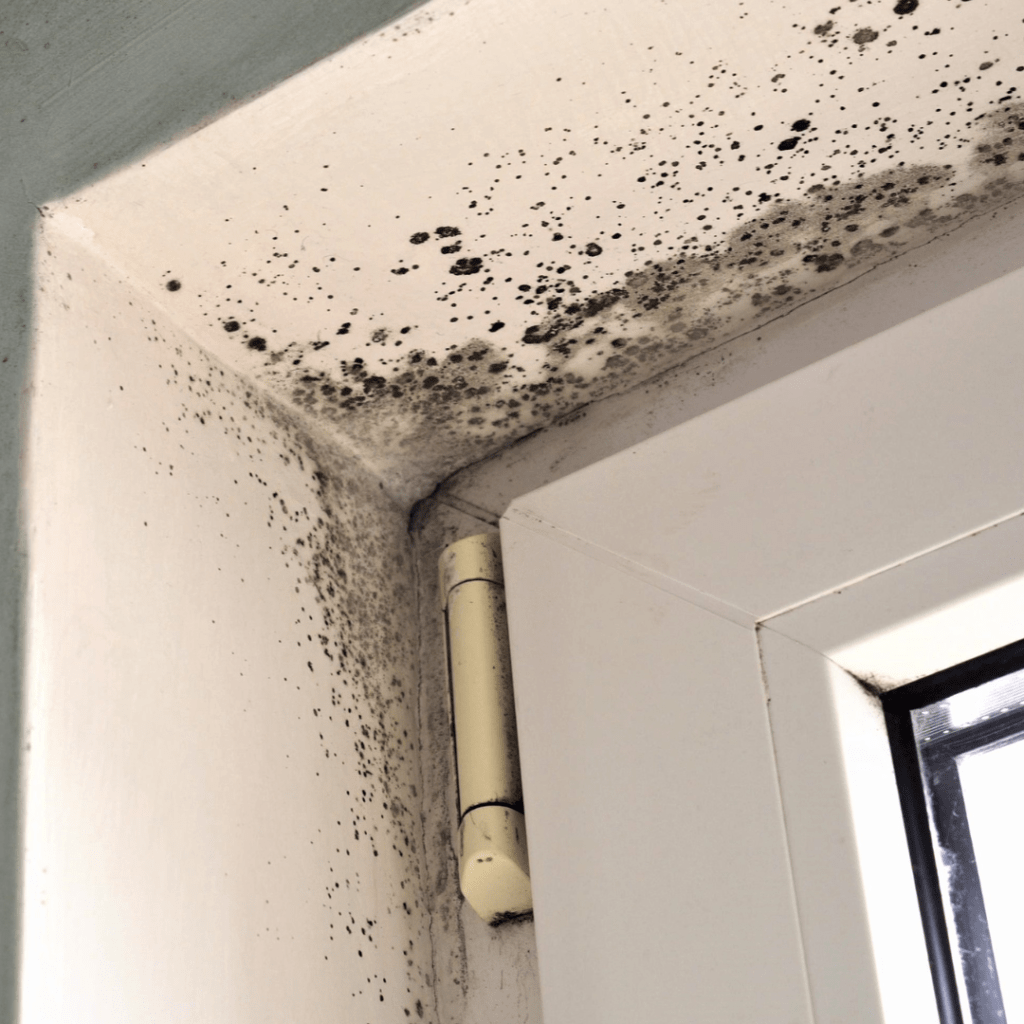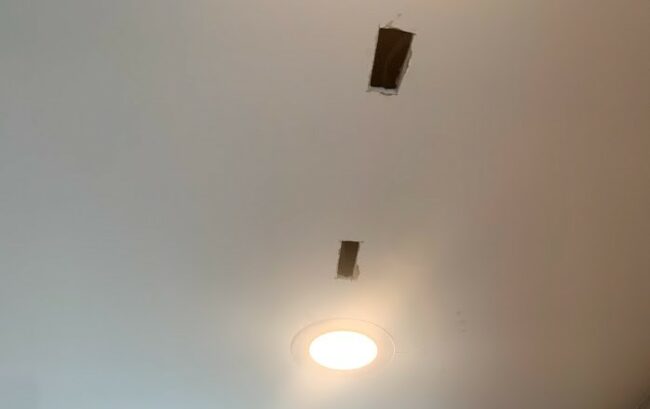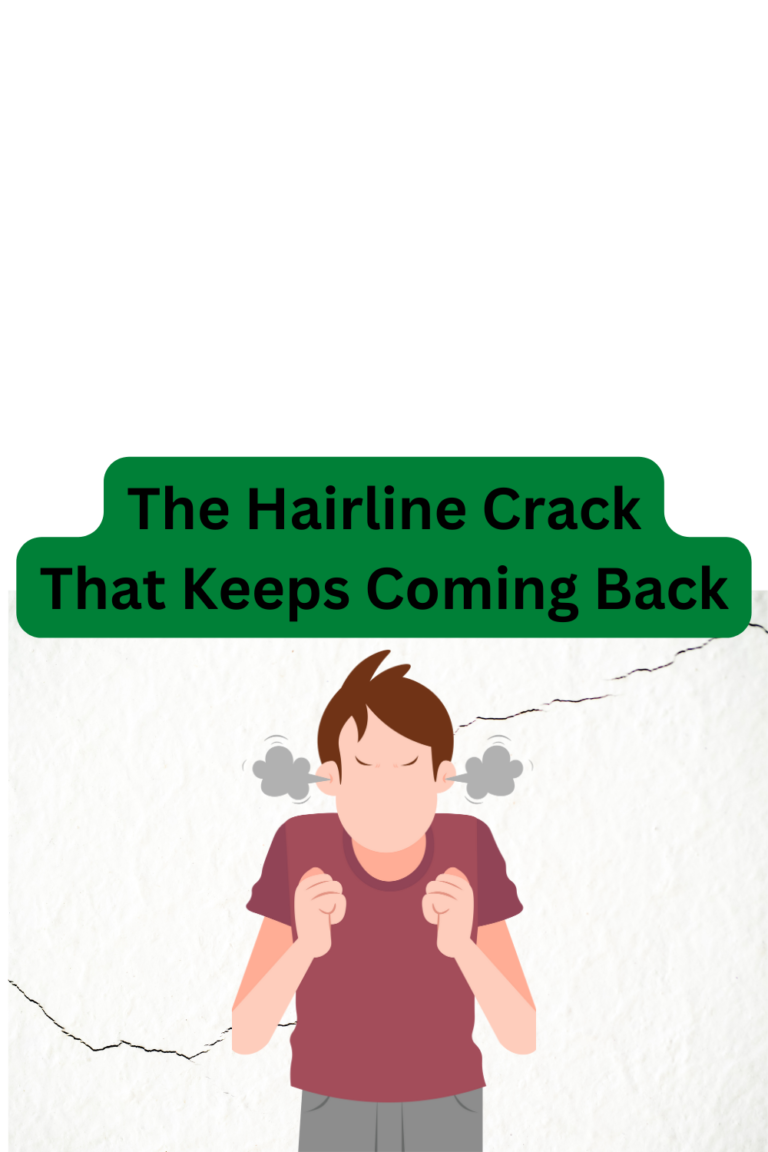How To Kill Black Mold On Drywall
While black mold might appear as an unsightly growth on your drywall, its implications go beyond aesthetics. Understanding the potential dangers associated with black mold is essential for prioritizing its removal and taking the necessary precautions. Let’s delve into the various risks that black mold poses.

The Dangers Of Black Mold
Black mold produces mycotoxins, which are harmful substances that can be released into the air and inhaled by occupants of the affected space. Prolonged exposure to these mycotoxins can lead to a range of health problems, especially for those with pre-existing respiratory conditions, allergies, or weakened immune systems. Common health concerns associated with black mold exposure include:
- Respiratory Issues: Inhaling mold spores can lead to respiratory symptoms such as coughing, wheezing, and shortness of breath. For individuals with asthma or other respiratory conditions, these symptoms can be exacerbated.
- Allergic Reactions: Mold spores can trigger allergic reactions in susceptible individuals. Symptoms may include sneezing, runny nose, itchy eyes, and skin rashes.
- Sinus Infections: Prolonged exposure to mold spores can contribute to sinus infections and chronic sinusitis.
- Fatigue and Headaches: Some individuals exposed to black mold may experience fatigue, headaches, and difficulty concentrating.
Aggravation of Existing Conditions
For individuals already battling health conditions, black mold exposure can further worsen their symptoms. Those with autoimmune disorders, chronic lung conditions, or compromised immune systems are particularly vulnerable to the adverse effects of mold exposure.
Long-term Health Implications
While short-term exposure to black mold can cause discomfort, the long-term effects of continuous exposure are more concerning. Some studies suggest a potential link between prolonged mold exposure and more serious health conditions, including neurological issues and even certain types of cancer. However, further research is needed to establish these links definitively.
Structural Damage
Beyond its health risks, black mold can compromise the integrity of your home’s structure. Drywall, wood, and other porous materials provide an ideal environment for mold growth. As the mold spreads, it can weaken these materials, potentially leading to costly repairs.
Preventing and Addressing the Dangers
Given the potential dangers of black mold, it’s crucial to take proactive measures to prevent its growth and address any existing infestations. Here are some steps you can take:
- Keep Your Home Dry: Moisture is the primary factor that encourages mold growth. Regularly inspect your home for leaks, fix them promptly, and ensure proper ventilation in areas prone to dampness, such as bathrooms and basements.
- Monitor Humidity: Use a hygrometer to measure indoor humidity levels. Keeping humidity below 50% can help prevent mold growth.
- Promptly Address Water Damage: If your home experiences water damage due to flooding or leaks, act quickly to dry out the affected areas. Mold can begin to grow within 24 to 48 hours of moisture exposure.
- Regular Cleaning: Regularly clean and maintain areas prone to moisture, such as bathrooms and kitchens. Use mold-resistant products where applicable.
- Professional Help: If you suspect a significant mold problem or have health concerns related to mold exposure, consider seeking assistance from professionals experienced in mold remediation.
When Black Mold Takes Over: Removing and Replacing Drywall
In some cases, black mold infestations on drywall might be extensive or deeply entrenched, making the DIY removal process more challenging. If you find that the mold growth has spread extensively or has significantly compromised the integrity of the drywall, it might be time to consider more comprehensive measures. Fortunately, if you’re facing a situation where black mold has taken over your drywall, I offer detailed guides on my website that walk you through the process of removing and replacing drywall.
These guides are designed to assist you in tackling the more intricate task of addressing extensive mold growth. They cover a step-by-step approach to safely removing the affected drywall, implementing proper disposal methods for mold-infested materials, and expertly installing new drywall to restore the aesthetic and structural integrity of your space.
While the DIY spirit is commendable, remember that dealing with significant black mold infestations might require specialized equipment and expertise. These guides serve as a valuable resource, but if you’re ever unsure about the scope of the problem or your ability to handle it, consulting with a professional mold remediation service is a wise decision. Your safety and the preservation of your home should always be the top priority.
How To Kill Black Mold
As you embark on the journey to address black mold on your drywall, it’s crucial to keep the potential dangers of this pesky intruder in mind.
*While this guide provides comprehensive steps for DIY mold removal, there may be instances where the extent of the mold growth or concerns about your health warrant the involvement of professionals. It doesn’t hurt to get a quote!
Remember, if you feel even slightly worried about the situation, hiring a professional mold remediation service can provide peace of mind and ensure the safety of both your home and your well-being.
Materials You’ll Need
Before you begin, gather the necessary materials:
- Protective Gear: Safety first! Wear gloves, an N95 respirator mask, and safety goggles to shield yourself from mold spores.
- Cleaning Solution: Opt for a DIY solution by mixing equal parts of white vinegar and water or hydrogen peroxide and water in a spray bottle. Alternatively, you may be able to use commercial mold cleaners.
- Scrubbing Tools: Soft brushes, scrubbing pads, or even an old toothbrush can be effective for scrubbing away the mold.
- Plastic Sheets and Tape: Seal off the affected area with plastic sheets to prevent the spread of spores. Secure the sheets with tape.
- Bucket of Water: Keep a bucket of clean water nearby to rinse your cleaning tools.
- Fan or Dehumidifier: Improving ventilation and reducing humidity will discourage future mold growth.
Step-by-Step Instructions
- Isolate the Area: Begin by sealing off the affected area with plastic sheets and tape to prevent spores from spreading. Open windows and use a fan to improve ventilation.
- Protect Yourself: Put on your protective gear to minimize your exposure to mold spores.
- Test the Cleaning Solution: Test your chosen cleaning solution on a small, inconspicuous area of the drywall to ensure it doesn’t cause damage or discoloration.
- Scrub Gently: Dip your scrubbing tool in the cleaning solution and gently scrub the mold-infested area. Avoid scrubbing too aggressively, as it could damage the drywall.
- Wipe and Rinse: Use a clean cloth dampened with water to wipe away the mold residue after scrubbing. Rinse the cloth frequently and change the water bucket if it becomes contaminated.
- Dry Thoroughly: Once the area is clean, allow it to dry completely. A dehumidifier can help expedite the drying process.
- Prevent Future Growth: Identify and address the source of moisture that led to mold growth in the first place. Repair leaks, improve ventilation, and consider using a dehumidifier.
- Monitor Regularly: Keep an eye on the treated area for any signs of recurring mold. Swiftly address any issues to prevent a recurrence.
Conclusion
Navigating the world of black mold on drywall requires a balanced approach that combines your determination to tackle the issue yourself with the wisdom to recognize when professional help is necessary. This guide has equipped you with the knowledge to identify, address, and prevent black mold growth, empowering you to safeguard your home and the well-being of your family.
Always remember the potential dangers associated with black mold, both in terms of health risks and structural integrity. If you ever find yourself uncertain or concerned, don’t hesitate to consult with experts in mold remediation. Your health and peace of mind are paramount, and professionals possess the expertise to ensure a thorough and safe resolution to even the most challenging mold situations.
By staying informed, taking prompt action, and adopting preventive measures, you’re not only tackling the immediate issue but also cultivating a living environment that promotes health, comfort, and longevity for your home. As you embark on this journey, remember that a proactive stance against black mold contributes to a safer, healthier, and happier living space for you and your loved ones.





